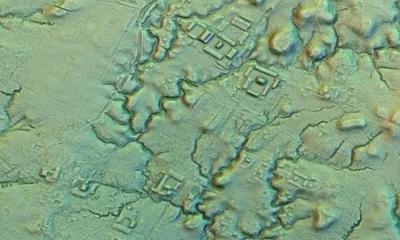Archaeologists have discovered a group of previously lost settlements in the Amazon jungle, one of which turned out to be a city with buildings constructed on mounds of earth, agricultural fields, canals, and even roads, one of which was 10 meters wide and 20 kilometers long. The population, which existed around 2000 years ago, was approximately 10,000.
The research director at the CNRS (National Center for Scientific Research) in France had discovered a series of earthen mounds, roads, and buried structures in forested slopes in a section of Ecuador in the Andes a couple of decades ago, but he was not sure at the time about how all of it fit together.
Recent maps prepared by Rustin using laser sensing technology revealed that what he had discovered was part of a dense network of interconnected settlements and roads that lasted for more than 1000 years. These settlements were inhabited by a people known as the Upano, who occupied the area from 500 BC to 300 or even 600 AD, which is roughly contemporary with the Roman Empire in Europe. It then became clear that what was found was "a lost valley of cities."
The residential and ceremonial buildings were built on over 6000 mounds of earth, surrounded by agricultural fields and sewage canals, with the widest road being 10 meters wide and a maximum length of 20 kilometers. As for the population, French archaeologist Antoine Dorison, a co-author of the study at the French research institute, stated that despite the difficulty in estimating their number, the site was home to no less than 10,000, possibly reaching up to 15,000, and perhaps even 30,000 at its peak. "This is comparable to the population of London during the Roman era, which was then the largest city in Britain," he expressed.
Previously, the scientific view of the Amazon region was limited to seeing it as a "virgin wilderness, home only to small groups of people," but recent discoveries have illuminated its civilized past, as scientists have found evidence of communities existing in its complex rainforests.




